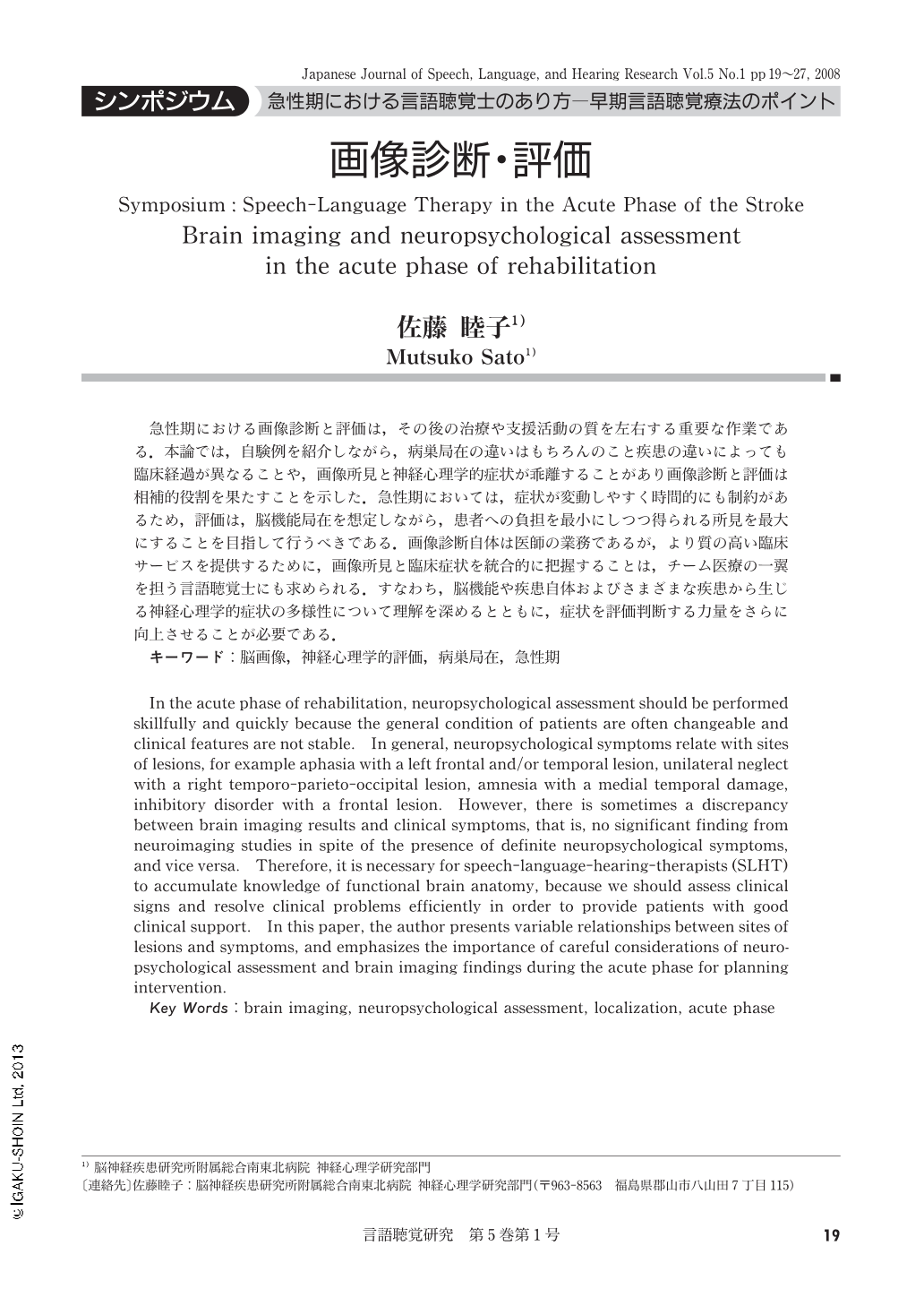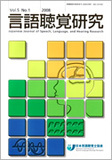Japanese
English
- 有料閲覧
- Abstract 文献概要
- 1ページ目 Look Inside
- 参考文献 Reference
- サイト内被引用 Cited by
急性期における画像診断と評価は,その後の治療や支援活動の質を左右する重要な作業である.本論では,自験例を紹介しながら,病巣局在の違いはもちろんのこと疾患の違いによっても臨床経過が異なることや,画像所見と神経心理学的症状が乖離することがあり画像診断と評価は相補的役割を果たすことを示した.急性期においては,症状が変動しやすく時間的にも制約があるため,評価は,脳機能局在を想定しながら,患者への負担を最小にしつつ得られる所見を最大にすることを目指して行うべきである.画像診断自体は医師の業務であるが,より質の高い臨床サービスを提供するために,画像所見と臨床症状を統合的に把握することは,チーム医療の一翼を担う言語聴覚士にも求められる.すなわち,脳機能や疾患自体およびさまざまな疾患から生じる神経心理学的症状の多様性について理解を深めるとともに,症状を評価判断する力量をさらに向上させることが必要である.
In the acute phase of rehabilitation, neuropsychological assessment should be performed skillfully and quickly because the general condition of patients are often changeable and clinical features are not stable. In general, neuropsychological symptoms relate with sites of lesions, for example aphasia with a left frontal and/or temporal lesion, unilateral neglect with a right temporo-parieto-occipital lesion, amnesia with a medial temporal damage, inhibitory disorder with a frontal lesion. However, there is sometimes a discrepancy between brain imaging results and clinical symptoms, that is, no significant finding from neuroimaging studies in spite of the presence of definite neuropsychological symptoms, and vice versa. Therefore, it is necessary for speech-language-hearing-therapists (SLHT) to accumulate knowledge of functional brain anatomy, because we should assess clinical signs and resolve clinical problems efficiently in order to provide patients with good clinical support. In this paper, the author presents variable relationships between sites of lesions and symptoms, and emphasizes the importance of careful considerations of neuropsychological assessment and brain imaging findings during the acute phase for planning intervention.

Copyright © 2008, Japanese Association of Speech-Language-Hearing Therapists. All rights reserved.


